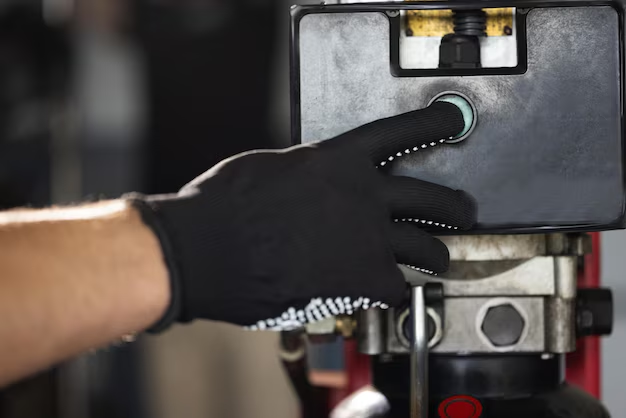Navigating the World of Refrigerator Compressor Installation: A Step-By-Step Guide
There's no doubt that a malfunctioning refrigerator can cause significant inconvenience. Whether it's spoiling food or disrupting household activities, the urgency to fix it is valid. At the heart of this issue often lies the compressor, a crucial component responsible for circulating refrigerant and maintaining the proper temperature within your fridge.
If you’re considering handling the complex task of installing a new compressor yourself, you’ve landed on the right guide. This comprehensive article will walk you through every step of the process, ensuring you have the knowledge and confidence to tackle this project like a pro.
🛠️ Understanding the Role of a Refrigerator Compressor
Before diving into the installation, it's essential to understand what a compressor does. The compressor is often referred to as the heart of the refrigerator. It pumps refrigerant throughout the fridge's cooling system. The refrigerant absorbs heat from the interior, keeping your food fresh and safe. A faulty compressor can fail to regulate this process, leading to higher temperatures and spoilage.
Key Signs Your Compressor Needs Replacement
Diagnosing the compressor issue accurately is crucial:
- Unusual noises: Grinding or clunking sounds can indicate mechanical failure.
- Warm temperatures: If your fridge interior isn’t cold enough, the compressor might not be functioning efficiently.
- Frequent clicking noises: This could mean the compressor is trying to start but failing.
While these signs might suggest compressor problems, always consider consulting with an appliance professional if you’re uncertain.
🧰 Gathering Your Tools and Materials
Proper preparation is key to any successful DIY project. Here’s what you will need:
- Replacement compressor: Ensure it is compatible with your refrigerator model.
- Screwdrivers: Both flathead and Phillips head for removing and securing screws.
- Wrench set: For detaching and attaching various components.
- Multimeter: To check electrical connections.
- Refrigerant recovery system: For safely handling refrigerant.
- Safety equipment: Gloves, eye protection, and a mask to prevent exposure to refrigerant.
- Soldering kit: For sealing connections.
Remember, having the right tools not only saves time but also enhances safety—always double-check your toolkit before starting.
🔧 Step-by-Step Guide to Installing a New Compressor
With tools in hand and the necessary background knowledge acquired, it's time to jump into the installation process.
1. Ensure Safety First
🔌 Unplug and Prepare
Always start by unplugging the refrigerator from the power source. This step is fundamental for your safety and to prevent any electrical hazards during the installation.
2. Accessing the Compressor
Remove the Back Panel
The compressor is typically located at the back of the refrigerator. Once you remove the back panel using a screwdriver, you’ll have access to the compressor unit.
3. Handling the Refrigerant
💨 Recover the Refrigerant
It’s crucial to safely manage the refrigerant in your system. Use a refrigerant recovery system to capture and store the refrigerant without releasing it into the environment. This process not only follows legal guidelines but also protects you and your environment from potential harm.
4. Removing the Old Compressor
Detach Connections
- Electrical Wires: Use a wrench to disconnect the wires and tubes attached to the old compressor.
- Mounting Bolts: Unscrew and carefully remove the mounting bolts. Gently slide out the old compressor.
5. Installing the New Compressor
🔁 Position and Connect
- Position the New Compressor: Place the new compressor into the allocated space.
- Reconnect Tubing: Reattach the copper tubing using your soldering kit.
- Secure Electrical Connections: Ensure that all wiring is connected securely. Use a multimeter to confirm no voltage issues exist.
6. Sealing and Testing
🌡️ Test the Seal and Power
- Solder All Joints: Ensure all connections are properly sealed to prevent leaks.
- Reinstall the Panel: Once you confirm there are no leaks, reinstall the back panel.
- Plug the refrigerator back in and test the unit for proper operation, ensuring the temperatures are stable and the compressor operates without unusual noises.
📝 Understanding the Importance of Following Legal Regulations
It is crucial to follow all local guidelines and regulations. Handling refrigerants requires adherence to environmental guidelines, often defined by local or national laws. Always ensuring compliance not only protects you legally but also contributes to environmental sustainability.
🔍 Troubleshooting and Common Mistakes
Even with careful planning, issues may arise post-installation. Here are some common problems and their solutions:
- Refrigerator Not Cooling: Double-check connections and ensure the compressor is receiving power.
- Leaky Fridge: Inspect the soldered joints for any potential leaks and reseal as necessary.
- Loud Operational Noise: Ensure that the compressor is securely mounted and that all fasteners are tightened.
📊 Quick Reference Guide
Here’s a concise bullet-point checklist for skimmability:
- 🛠️ Tools Needed: Screwdrivers, wrenches, multimeter, refrigerant recovery system, soldering kit.
- 🔌 Start with Safety: Always unplug your fridge.
- 💨 Handle Refrigerant Carefully: Use recovery systems to avoid environmental harm.
- 🔧 Key Steps: Remove panels → Disconnect old compressor → Install new compressor → Reconnect and test.
- ✅ Final Checks: Ensure no leaks, test with multimeter, confirm stable operation.
Reflecting on Your Refrigerator Repair Journey
By now, you should have a well-functioning refrigerator and the satisfaction of having addressed a significant appliance challenge. Replacing a refrigerator compressor is not a minor task, but with detailed guidance and a methodical approach, it's an achievable DIY project.
When adhering to the best practices detailed, you’ve reduced the potential for food spoilage and contributed to a more energy-efficient household appliance. Should you encounter persistent issues, consider reaching out to professionals for more in-depth diagnostics and repairs.
Ultimately, understanding your refrigerator’s mechanics can empower you to tackle similar projects in the future, saving you both time and money—and improving your DIY prowess along the way!
